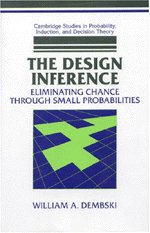In computer science, the computational complexity or simply complexity of an algorithm is the amount of resources required to run it. Particular focus is given to computation time and memory storage requirements. The complexity of a problem is the complexity of the best algorithms that allow solving the problem.

Quantum information is the information of the state of a quantum system. It is the basic entity of study in quantum information theory, and can be manipulated using quantum information processing techniques. Quantum information refers to both the technical definition in terms of Von Neumann entropy and the general computational term.
A pseudorandom number generator (PRNG), also known as a deterministic random bit generator (DRBG), is an algorithm for generating a sequence of numbers whose properties approximate the properties of sequences of random numbers. The PRNG-generated sequence is not truly random, because it is completely determined by an initial value, called the PRNG's seed. Although sequences that are closer to truly random can be generated using hardware random number generators, pseudorandom number generators are important in practice for their speed in number generation and their reproducibility.
This list contains selected positive numbers in increasing order, including counts of things, dimensionless quantities and probabilities. Each number is given a name in the short scale, which is used in English-speaking countries, as well as a name in the long scale, which is used in some of the countries that do not have English as their national language.
In computer science, a one-way function is a function that is easy to compute on every input, but hard to invert given the image of a random input. Here, "easy" and "hard" are to be understood in the sense of computational complexity theory, specifically the theory of polynomial time problems. This has nothing to do with whether the function is one-to-one; finding any one input with the desired image is considered a successful inversion.
Solomonoff's theory of inductive inference proves that, under its common sense assumptions (axioms), the best possible scientific model is the shortest algorithm that generates the empirical data under consideration. In addition to the choice of data, other assumptions are that, to avoid the post-hoc fallacy, the programming language must be chosen prior to the data and that the environment being observed is generated by an unknown algorithm. This is also called a theory of induction. Due to its basis in the dynamical character of Algorithmic Information Theory, it encompasses statistical as well as dynamical information criteria for model selection. It was introduced by Ray Solomonoff, based on probability theory and theoretical computer science. In essence, Solomonoff's induction derives the posterior probability of any computable theory, given a sequence of observed data. This posterior probability is derived from Bayes' rule and some universal prior, that is, a prior that assigns a positive probability to any computable theory.
In cryptography, a preimage attack on cryptographic hash functions tries to find a message that has a specific hash value. A cryptographic hash function should resist attacks on its preimage.
Specified complexity is a creationist argument introduced by William Dembski, used by advocates to promote the pseudoscience of intelligent design. According to Dembski, the concept can formalize a property that singles out patterns that are both specified and complex, where in Dembski's terminology, a specified pattern is one that admits short descriptions, whereas a complex pattern is one that is unlikely to occur by chance. An example cited by Dembski is a poker hand, where for example the repeated appearance of a royal flush will raise suspicion of cheating. Proponents of intelligent design use specified complexity as one of their two main arguments, along with irreducible complexity.

Intelligent Design: The Bridge Between Science and Theology is a 1999 book by the mathematician William A. Dembski, in which the author presents an argument in support of the pseudoscience of intelligent design. Dembski defines the term "specified complexity", and argues that instances of it in nature cannot be explained by Darwinian evolution, but instead are consistent with the intelligent design. He also derives an instance of his self-declared law of conservation of information and uses it to argue against Darwinian evolution. The book is a summary treatment of the mathematical theory he presents in The Design Inference (1998), and is intended to be largely understandable by a nontechnical audience. Dembski also provides a Christian theological commentary, and analysis of, what he perceives to be the historical and cultural significance of the ideas.
In theoretical computer science and cryptography, a pseudorandom generator (PRG) for a class of statistical tests is a deterministic procedure that maps a random seed to a longer pseudorandom string such that no statistical test in the class can distinguish between the output of the generator and the uniform distribution. The random seed itself is typically a short binary string drawn from the uniform distribution.
Bremermann's limit, named after Hans-Joachim Bremermann, is a theoretical limit on the maximum rate of computation that can be achieved in a self-contained system in the material universe. It is derived from Einstein's mass–energy equivalency and the Heisenberg uncertainty principle, and is c2/h ≈ 1.3563925 × 1050 bits per second per kilogram.

The Design Inference: Eliminating Chance through Small Probabilities is a 1998 book by American philosopher and mathematician William A. Dembski, a proponent of intelligent design, which sets out to establish approaches by which evidence of intelligent agency could be inferred in natural and social situations. In the book he distinguishes between three general modes of competing explanations in order of priority: regularity, chance, and design. The processes in which regularity, chance, and design are ruled out one by one until one remains as a reasonable and sufficient explanation for an event, are what he calls an "explanatory filter". It is a method that tries to eliminate competing explanations in a systematic fashion including when a highly improbable event conforms to a discernible pattern that is given independently of the event itself. This pattern is Dembski's concept of specified complexity. Throughout the book he uses diverse examples such as detectability of spontaneous generation and occurrence of natural phenomena and cases of deceit like ballot rigging, plagiarism, falsification of data, etc.
In cryptography, concrete security or exact security is a practice-oriented approach that aims to give more precise estimates of the computational complexities of adversarial tasks than polynomial equivalence would allow. It quantifies the security of a cryptosystem by bounding the probability of success for an adversary running for a fixed amount of time. Security proofs with precise analyses are referred to as concrete.
In cryptography, a security parameter is a way of measuring of how "hard" it is for an adversary to break a cryptographic scheme. There are two main types of security parameter: computational and statistical, often denoted by and , respectively. Roughly speaking, the computational security parameter is a measure for the input size of the computational problem on which the cryptographic scheme is based, which determines its computational complexity, whereas the statistical security parameter is a measure of the probability with which an adversary can break the scheme.
Algorithmic information theory (AIT) is a branch of theoretical computer science that concerns itself with the relationship between computation and information of computably generated objects, such as strings or any other data structure. In other words, it is shown within algorithmic information theory that computational incompressibility "mimics" the relations or inequalities found in information theory. According to Gregory Chaitin, it is "the result of putting Shannon's information theory and Turing's computability theory into a cocktail shaker and shaking vigorously."
In cryptography, an adversary's advantage is a measure of how successfully it can attack a cryptographic algorithm, by distinguishing it from an idealized version of that type of algorithm. Note that in this context, the "adversary" is itself an algorithm and not a person. A cryptographic algorithm is considered secure if no adversary has a non-negligible advantage, subject to specified bounds on the adversary's computational resources. "Negligible" usually means "within O(2−p)" where p is a security parameter associated with the algorithm. For example, p might be the number of bits in a block cipher's key.
In mathematics, a negligible function is a function :\mathbb {N} \to \mathbb {R} } such that for every positive integer c there exists an integer Nc such that for all x > Nc,
A randomness extractor, often simply called an "extractor", is a function, which being applied to output from a weak entropy source, together with a short, uniformly random seed, generates a highly random output that appears independent from the source and uniformly distributed. Examples of weakly random sources include radioactive decay or thermal noise; the only restriction on possible sources is that there is no way they can be fully controlled, calculated or predicted, and that a lower bound on their entropy rate can be established. For a given source, a randomness extractor can even be considered to be a true random number generator (TRNG); but there is no single extractor that has been proven to produce truly random output from any type of weakly random source.
Generic-case complexity is a subfield of computational complexity theory that studies the complexity of computational problems on "most inputs".
Continuous-variable (CV) quantum information is the area of quantum information science that makes use of physical observables, like the strength of an electromagnetic field, whose numerical values belong to continuous intervals. One primary application is quantum computing. In a sense, continuous-variable quantum computation is "analog", while quantum computation using qubits is "digital." In more technical terms, the former makes use of Hilbert spaces that are infinite-dimensional, while the Hilbert spaces for systems comprising collections of qubits are finite-dimensional. One motivation for studying continuous-variable quantum computation is to understand what resources are necessary to make quantum computers more powerful than classical ones.



